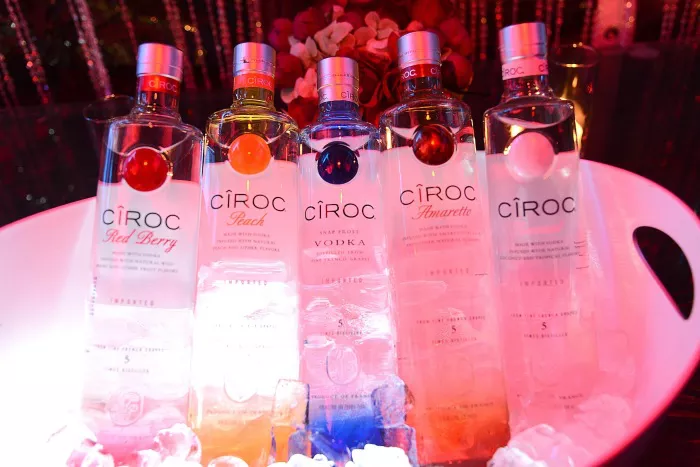In the realm of mixology, where concoctions range from the potent to the refreshing, the question often arises: What’s the weakest cocktail? Delving into the world of cocktails, we embark on a journey to explore and demystify the gentle side of mixology.
Understanding the Notion: Weakest vs. Lightest
Before we dive into the specifics, it’s crucial to clarify the distinction between the terms “weakest” and “lightest” when referring to cocktails. Weakest typically denotes the drink with the lowest alcohol content, while lightest considers factors like calorie count, sweetness, and overall drinkability. Our exploration primarily focuses on the former, deciphering which cocktail stands as the epitome of low alcoholic strength.
The Classic Contenders: From Spritzers to Coolers
When pondering the question of the weakest cocktail, it’s essential to survey the landscape of classic contenders. Spritzers and coolers, characterized by their effervescence and refreshing nature, often take the spotlight. Drinks like the Aperol Spritz or a classic wine cooler are known for their lower alcohol content, making them prime candidates for the title of the weakest cocktail.
Low-Proof Legends: Cocktails with Lower Alcohol by Volume (ABV)
To unravel the mystery further, we must explore the realm of low-proof cocktails. These beverages intentionally feature spirits with lower alcohol by volume (ABV) to create a more laid-back drinking experience. Classics like the Shandy, which combines beer with a non-alcoholic mixer, or the Americano, with its mix of vermouth and soda, often find themselves in the conversation about the weakest cocktails.
Mocktails and the Rise of Non-Alcoholic Alternatives
In recent years, the rise of non-alcoholic alternatives and the art of crafting mocktails have added an intriguing dimension to the exploration of weak cocktails. These alcohol-free concoctions, often made with fresh ingredients and complex flavor profiles, challenge the traditional notion of cocktails, offering a delightful experience without the alcohol punch. What’s the weakest cocktail if it doesn’t contain any alcohol at all?
Mixing for Moderation: Lowering Alcohol Content Creatively
Cocktail enthusiasts and bartenders alike have embraced the challenge of mixing for moderation. Experimenting with various techniques, ingredients, and dilution methods, they aim to create cocktails that maintain flavor complexity while keeping the alcohol content low. From infusions and muddled fruits to the artful use of ice and water, mixologists are pushing the boundaries to redefine what constitutes the weakest cocktail.
The Socio-Cultural Shift: Embracing Moderation in Drinking Culture
As societal attitudes toward alcohol consumption evolve, a significant shift towards moderation becomes apparent. The demand for lighter and lower-alcohol beverages mirrors this cultural transformation. Understanding the socio-cultural context is integral to unraveling the mystery of what’s the weakest cocktail, as it reflects not only taste preferences but also a broader shift in lifestyle choices.
Navigating the ABV Spectrum: From Highballs to Lowballs
To truly comprehend the weakest cocktail, it’s imperative to navigate the alcohol by volume (ABV) spectrum. Highballs, typically mixed with a larger volume of non-alcoholic mixer, tend to be lower in alcohol content. Lowballs, on the other hand, feature a higher concentration of spirits. Exploring these categories sheds light on which cocktails occupy the lower end of the ABV spectrum, providing insight into the gentlest libations.
See Also: alabama signature drink
Analyzing the Numbers: ABV Breakdown of Popular Cocktails
An analytical approach to the question involves scrutinizing the alcohol content of popular cocktails. By breaking down the ABV of classics like the Moscow Mule, Mojito, and Tom Collins, we can discern which of these well-loved concoctions claims the title of the weakest cocktail. This numerical exploration adds a quantitative perspective to the qualitative art of mixology.
Brewing Weakness: The World of Beer Cocktails
Beer cocktails, or beertails, introduce yet another dimension to the discussion. Incorporating beer as a base, these concoctions often possess lower alcohol content compared to traditional cocktails. Shandies, beer mixed with lemonade or soda, epitomize the fusion of beer and low-proof elements, making them strong contenders in the quest to identify what’s the weakest cocktail.
Mocktail Revolution: Crafting Complexity without Alcohol
The mocktail revolution challenges the conventional notion that a cocktail must contain alcohol to be considered sophisticated. Bartenders, inspired by the demand for alcohol-free options, have crafted intricate mocktails that rival their boozy counterparts in complexity and presentation. This movement not only caters to those seeking a lighter option but also redefines the boundaries of mixology.
Beyond the Bar: Weak Cocktails at Home and Beyond
As home bartending gains popularity, enthusiasts seek recipes for weak cocktails that can be easily recreated in the comfort of their own space. Exploring the ingredients readily available in home kitchens and local markets, individuals can discover the joy of crafting their own weak cocktails, tailored to personal preferences. The home bartending trend extends the conversation beyond the bar, emphasizing accessibility and creativity.
Conclusion: A Symphony of Weakness in Mixology
In conclusion, the quest to answer the question, “What’s the weakest cocktail?” unveils a fascinating symphony of flavors, techniques, and cultural shifts within the world of mixology. From classic contenders to the rising prominence of non-alcoholic alternatives, the landscape of weak cocktails is diverse and dynamic. As societal preferences lean towards moderation, the art of crafting low-alcohol beverages continues to evolve, ensuring that there’s a delicate and delightful option for every palate. So, the next time you find yourself contemplating the weakest cocktail, remember that weakness, in this context, is a virtue – a testament to the intricate balance of flavors that can be achieved without an overpowering alcohol punch. Cheers to the world of gentle libations!


